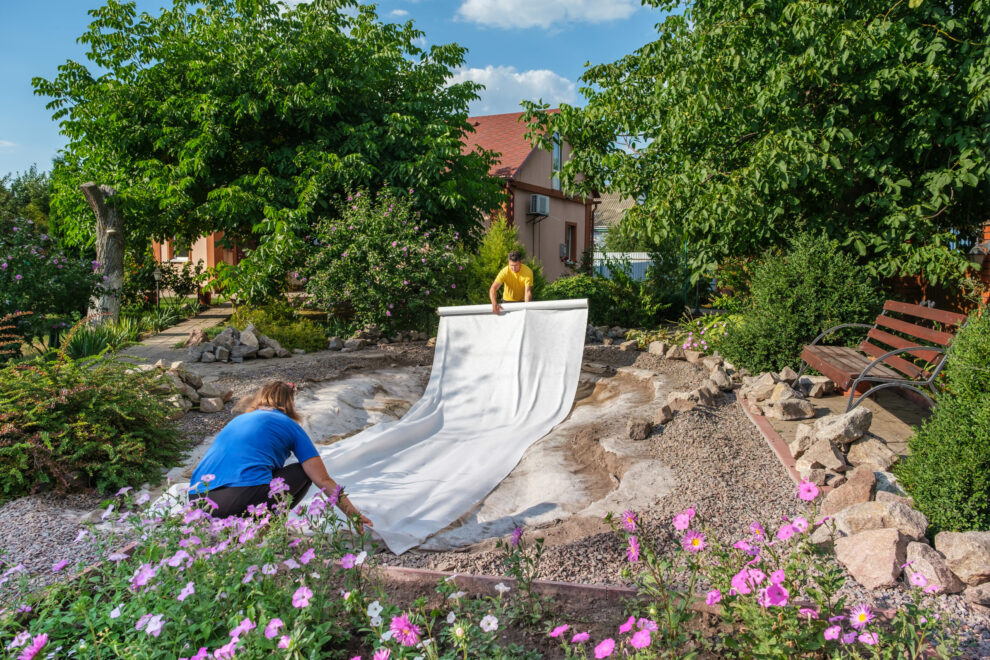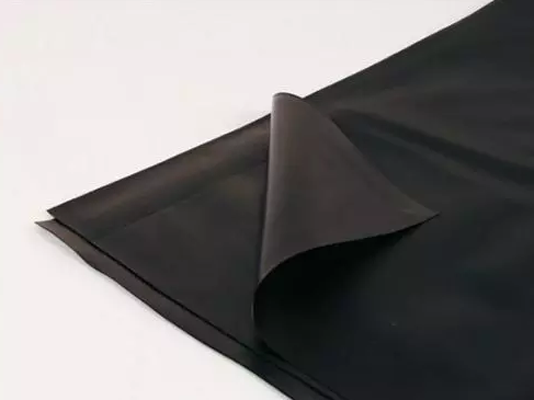What is the best garden pond liner?
The best pond liner is one that is easy to lay, suits your budget, lasts a lifetime, and doesn’t leak. Pond liner can be made from materials including PVC, HDPE, Butyl, EPDM and rubber. Choose a liner that comes with a lifetime guarantee against degradation by the weather and once fitted, you may never need to attend to it again.
How thick does a pond liner need to be?
Garden pond liners varies from 0.35mm to 0.5mm, 0.75mm and 1mm thick. The thicker the liner, the less likely it is to be punctured by sharp stones underneath it, but it’s recommended that all liners are laid on top of an underlay for added protection.
Thinner liners are the most economical and can even come with a lifetime guarantee. For large pond projects like Koi ponds, a 1mm thick liner is the thickest available, is used commercially, and offers extra peace of mind that the best possible liner has been used.
How much is pond liner?
A 2.5 x 2.5m Swell Pond Liner is a perfect start for a small pond and will create a pond large enough for wildlife or even fish. Swell pond liner is incredible value for money when you consider what you can create for the money. Ponds bring life and movement to the garden and can be educational, recreational and useful to all sorts of wildlife from birds and insects to mammals and amphibians.
Can you use a tarp as pond liner?
It’s not recommended to use a tarpaulin to line a pond as there’s no guarantee from the manufacturer that it won’t leak or break down over time. Or even that it’s safe for fish. A purpose-built quality pond liners can be as cheap as a tarpaulin and comes with a guarantee, so why take the risk?
How much pond liner do I need?
To calculate how much pond liner you need, measure the maximum width, maximum length and maximum depth, then add double the depth measurement onto both width and length to get the size of pond liner you need. Then add another 30cm/12” onto the width and length to give you some spare liner for laying around the edge.
If you want an accurate calculation and peace of mind that you are buying the right size, use the Swell Pond Liner calculator here https://www.swelluk.com/pond-liner-calculator.html
How to edge pond liner?
Exposed pond liner can look unsightly around the edge of the pond and spoil that natural look you want to create. If digging a pond at ground level remove 30cm/12” of turves all the way around the pond, put the liner down, cut it to the edge of the lawn and then replace the turves over the top. The lawn will then come right up to the water’s edge, looking natural, and making it suitable for wildlife to leave or enter the water.
Ground level ponds can also be edged with flagstones, pebbles or large, flat rockery stones. To do this do the same as the above, removing turves, laying a 30cm border of liner down around the pond, then placing the edging materials on top of the exposed liner, and up to the water’s edge. If using concrete or mortar make sure it is not touching the water, or paint with a waterproof sealant.
For raised ponds overlap the edges with liner so that they hang down on the outsides. Trim to fit, like pastry in a pie dish, then apply either timber edging on top for timber ponds or capping blocks for brick-built ponds. The aim with all lined ponds is to not have any visible liner showing at all. Hard edging that projects over the water’s edge can also help with that.

How to fit pond liner?
The best time to fit garden pond liners is on a warm, sunny day. Carefully lay the liner out next to the pond and let it warm up in the sun. As it warms it becomes more flexible. Using at least two people, lift and walk it over the space like a bedsheet, then gently lower it down.
Turn on the hose and water will start to fill the deepest point. As it fills with water gently pull it outwards in every direction to minimise creases. Once filled with water, the pond liner can be trimmed to size and shape with scissors.
Can I use carpet instead of pond liner underlay?
We would recommend using carpet as well as underlay for extra protection if you have some spare, but it will degrade, may move or bulge, and isn’t purpose-built for lining ponds. Either go underlay, liner, or carpet, underlay, flexible pond liners in that order.
Should I line the hole with sand?
Anything that helps smooth the edges of a freshly dug garden pond is a benefit. Sand won’t stick to vertical walls but a layer could be sprinkled over the base to soften the effects of any sharp stones that the liner will push down onto once filled. All in-ground ponds should be raked and sharp stones, glass and tree roots removed before laying underlay, then pond liner.
What is box-weld pond liner?
Box welded are garden pond liners that have been cut, folded and sealed into a shape by the manufacturer. A formal, square, raised pond would suffer from creases if using a conventional sheet of any pond liner.
But give Swell the exact dimensions (like 2m x 2m x 0.6m deep for example,) and an exact 2m x 2m x 0.6m box-shaped liner can be made with no excess to cut off, no creases, and it will fit the inner dimensions of the pond perfectly. To top it off request a box liner with a flange that capping can then be placed over, around the top edges.










Comments 2